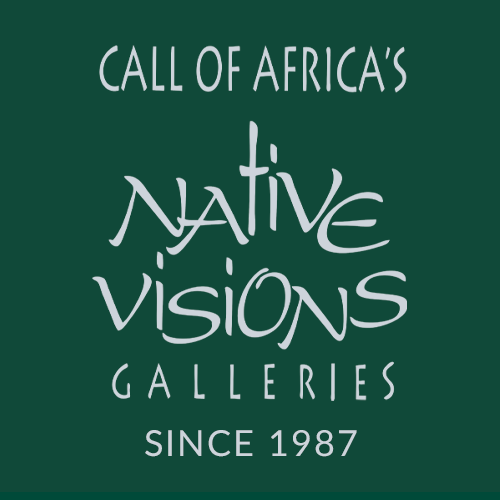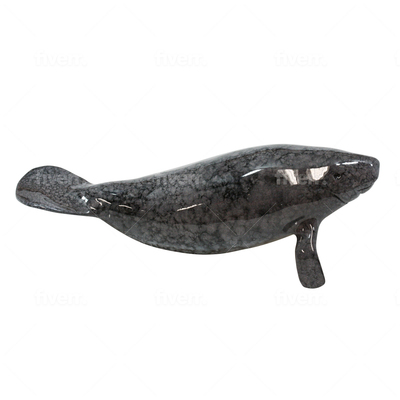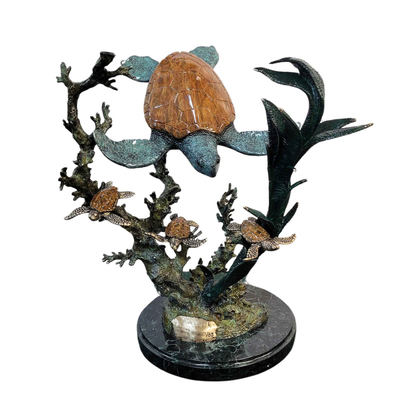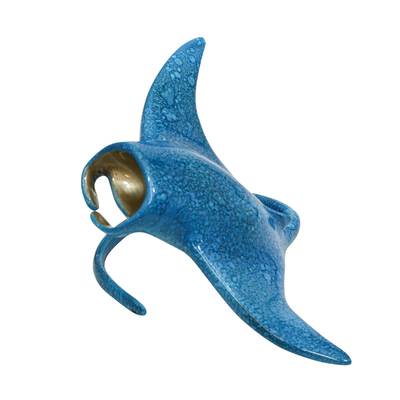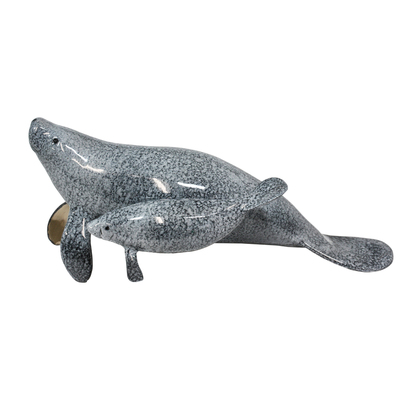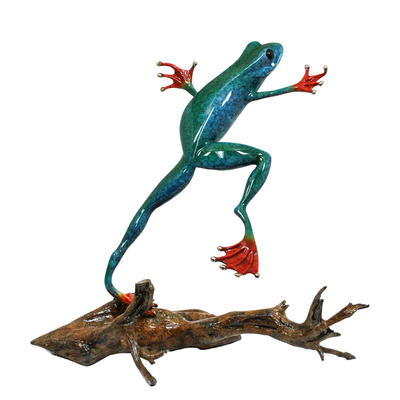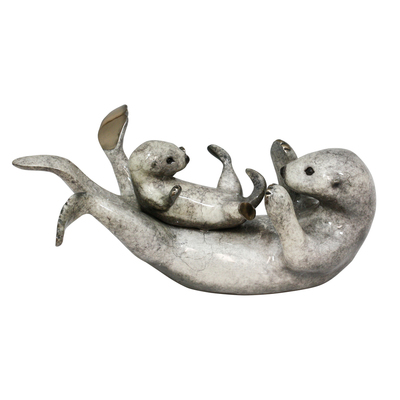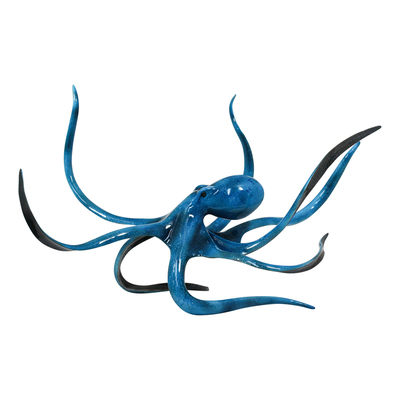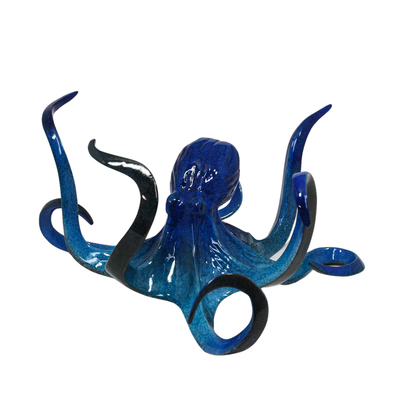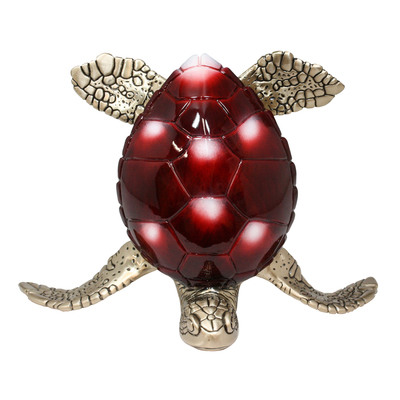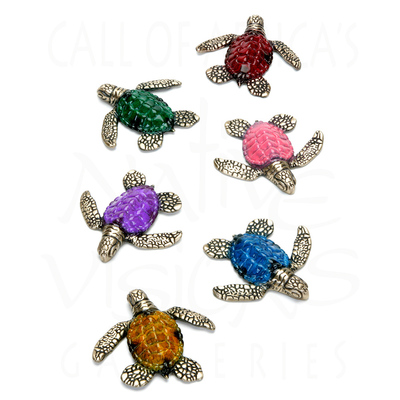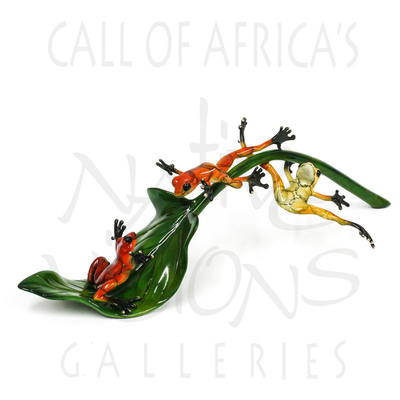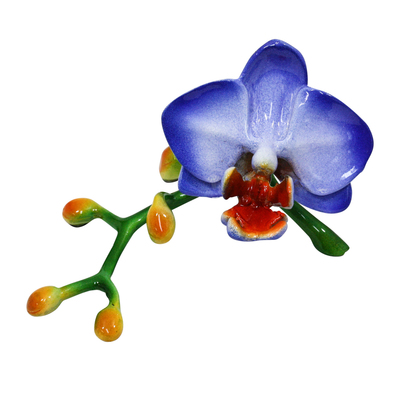Joseph Quillan
Capturing the spirit through art, education and conservation
Joseph Quillan's memories of his childhood, always focus around three things, nature, animals and art. Joseph was lucky enough as a child to grow up with a large pond behind his parents’ home and remembers shaping the mud and grasses to look like the animals of the pond. Turtles, frogs, ducks and even the fish in the pond became the subjects of his budding sculpture career. He would scoop pollywogs out of one pond into a smaller adjacent pond, coming back each day to check out how his new friends and captives had changed overnight. When he wasn't playing in the mud, Joseph drew the many creatures that visited the pond. He created a large goose out of wood in hopes of attracting some geese to the pond, but he learned that at times, even the hardest of effort did not bring the wished for outcome, as no geese ever came to his pond. ...More...
As a child, Joseph discovered that being an artist was easy for him. Even though everything in his young life revolved around creating, drawing and nature, he never would have dreamed at the time of being a "real" artist. "In my Catholic grade school, I would draw all day long creating dozens of images of animals, dinosaurs and friends. When I went out to recess, the nuns would search my desk and throw all of the drawings away. But of course, when there was a local art competition between schools, they would make sure to enter me to represent St. Elisabeth. Teachers would even ask me to tutor other kids in the school. Art for me was a wonderful discovery. I made friends with the people I drew. Imagine the acceptance I felt when the star of the Basketball team accepted one of my drawings of him scoring a basket."
By the age of 16, Joseph would qualify as a "professional" artist, as his passion for animals led to his first commissions. He became obsessed with show dogs and learned everything he could about the breeds, reading every book, memorizing pedigrees, attending shows, and talking to handlers. At the time he didn't know that this was his first taste of "networking", but it worked and he was asked to paint several show dogs by the proud owners. He was amazed that people would actually pay him to paint their dogs. His biggest check at that time was $160.00 for a dog named "Blicks Mojo Shinback". At that same time, Joseph worked at the local veterinarian clinic and met several other people who wanted lasting memories of their loving pets. Joseph was encouraged by the many animal lovers and activists he met, including Betty White, Bob Barker, Susan Dey and Actors and Others for Animals president, Earl Holliman.
After High School at Notre Dame, Joseph attended Los Angeles Pierce College and studied pre veterinary courses, and of course, art. The class that changed his life was Advanced Casting, where he crafted and cast his first jewelry and sculpture designs. By the age of 20, Joseph attended the Gemological Institute of America for advanced jewelry design. He started designing custom jewelry, and ironically a series of turtles and frogs playing sports, selling them at many of California's juried art shows. His love of California's coast, especially the central coast, where whales, otters and sea lions could be seen as he sat on large rocks jutting above the surf, stimulated his creation of marine life designs. He joined the American Cetacean Society and learned all he could about whales and dolphins. He began to show his larger sculptures of Humpback Whales at art festivals and won his first award at the Catalina Festival of Art in 1982. He was presented his award at the famous Wrigley Casino, where his parents had met and danced together some SO years earlier. It was quite an emotional moment.
In 1983, he was invited to display his sculptures at Dolphin Galleries and Lahaina Galleries, while on a visit to Maui to sell his jewelry designs to local shops. Ironically, Lahaina Galleries had turned him down for exhibition just 6 months earlier. His first showing was with legendary painter George Sumner. 1983 was certainly a magical year for marine life art in Hawaii. Joseph had just met Robert Wyland the previous year when Wyland introduced himself to Joseph and purchased a 14 kt gold Sperm Whale and baby from Joseph at the Catalina Festival of Arts. Wyland was at the time an unknown artist with a head filled with dreams. Joseph and Wyland became friends and Robert invited Joseph to Hawaii to show his sculptures with him and George Sumner at Sea Life Park on the Island of Oahu. His fondest memories at that show are swimming, riding and kissing the two false killer whales at the park.
Joseph was the first artist to display fine art brom.es of marine life in Hawaii. He joined painters George Sumner and Robert Lyn Nelson in pioneering the wave of artists to come. 1heir efforts not only spawned the marine life art movement, but put Hawaii on the map as one of the world's foremost art centers. Joseph feels blessed that his friends, environmental artists Wyland, Robert Lyn Nelson and Christian Lassen have all acquired his creations.
Over the next several years, Joseph would establish his artwork through many prestigious awards, including the Mystic International Award for Excellence, several Best of Shows in juried outdoor festivals, the Beverly Hills Affair in the Gardens, Catalina Invitational and the Brentwood Festival of Arts. Joseph was proud to win the Temecula Valley Art Association "People's Choice Award". His artwork can be seen in over 40 fine art galleries in the United States and internationally. Joseph's monumental works can be seen on each coast. "Leaping Tuna'' an 8 foot monument dedicated to the preservation of marine life fisheries is part of a California State Historical Place on the island of Catalina in California, while his life size Sea Turtle, "Companion" sits on display at the Registry Resort in Naples, Florida.
His latest adventures are the creation of the "Archie Carr Award" and the Endangered Species Series. The Archie Carr award is named after the man who was the father of sea turtle conservation. That award is given to the person who has given the most of their life to sea turtle conservation. Lately, Joseph has become involved with numerous environmental charities and created his "Conserve, Educate, Participate" pamphlets to be given to middle and high school children to help educate them on those subjects. His other passion is the battle against cancer, a disease that visited Joseph in 2005. He strongly supports ARTS (A Reason To Survive}, a San Diego non-profit organization dedicated to bringing hope, healing and self-confidence to the lives of children and youth facing adversities, including cancer, by providing expressive opportunities through the visual, performing and literary arts.
Over the last three decades, Joseph has devoted his life to his sculpture. He maintains a studio in the wine country of Temecula, California, where he sculpts all of his originals. Having worked with many fine art foundries, he has acquired the hands on experience essential to the art of fine bronze metal casting. To this day, he personally performs many of the complex tasks involved in the creation of his sculptures and strives for the highest quality in his sculptures, in both design and craftsmanship.
In parting Joseph says "even with all of the success I have had, I still get the excitement, much as I did when I drew friends in grade school, whenever one of my creations, no matter how small, goes home with a new friend to be enjoyed and passed down."
On a more personal note, Joseph comes from a family of talented artists. His Father, John Quillan, who passed away in 1985, was a comedy writer for several radio and television shows of the l 950's. His scripts are permanently archived at the UCLA School of Theatre, Film and Television. Joseph's mother, Anita Thompson Quillan, who passed away in 1991, was a dancer and was featured in many Hollywood movies of the 1930's, including "Gold Diggers of 1933". His Uncle Eddie Quillan starred in over 60 motion pictures and was discovered by Mack Sennett in the l 920's. Some of his credits include "'The Grapes of Wrath" and "Young Mr. Lincoln" with Henry Fonda, "Mutiny on the Bounty" with Clark Gable and he was the man who taught Gene Kelly how to dance the jig in "Brigadoon". All twelve of Joseph's aunts and uncles have appeared in movies in different roles. His Uncle Joe Quillan was a Broadway playwright who also wrote the 1950's television comedy, "Our Miss Brooks", as well as several movies starring Bob Hope and Bing Crosby. Joseph's sister Kate was a model, while his sister Barbara starred as one of the main characters in the original 1936 version of "Swiss Family Robinson" at the age of three....Less...
Joseph Quillan's memories of his childhood, always focus around three things, nature, animals and art. Joseph was lucky enough as a child to grow up with a large pond behind his parents’ home and remembers shaping the mud and grasses to look like the animals of the pond. Turtles, frogs, ducks and even the fish in the pond became the subjects of his budding sculpture career. He would scoop pollywogs out of one pond into a smaller adjacent pond, coming back each day to check out how his new friends and captives had changed overnight. When he wasn't playing in the mud, Joseph drew the many creatures that visited the pond. He created a large goose out of wood in hopes of attracting some geese to the pond, but he learned that at times, even the hardest of effort did not bring the wished for outcome, as no geese ever came to his pond. ...More...
As a child, Joseph discovered that being an artist was easy for him. Even though everything in his young life revolved around creating, drawing and nature, he never would have dreamed at the time of being a "real" artist. "In my Catholic grade school, I would draw all day long creating dozens of images of animals, dinosaurs and friends. When I went out to recess, the nuns would search my desk and throw all of the drawings away. But of course, when there was a local art competition between schools, they would make sure to enter me to represent St. Elisabeth. Teachers would even ask me to tutor other kids in the school. Art for me was a wonderful discovery. I made friends with the people I drew. Imagine the acceptance I felt when the star of the Basketball team accepted one of my drawings of him scoring a basket."
By the age of 16, Joseph would qualify as a "professional" artist, as his passion for animals led to his first commissions. He became obsessed with show dogs and learned everything he could about the breeds, reading every book, memorizing pedigrees, attending shows, and talking to handlers. At the time he didn't know that this was his first taste of "networking", but it worked and he was asked to paint several show dogs by the proud owners. He was amazed that people would actually pay him to paint their dogs. His biggest check at that time was $160.00 for a dog named "Blicks Mojo Shinback". At that same time, Joseph worked at the local veterinarian clinic and met several other people who wanted lasting memories of their loving pets. Joseph was encouraged by the many animal lovers and activists he met, including Betty White, Bob Barker, Susan Dey and Actors and Others for Animals president, Earl Holliman.
After High School at Notre Dame, Joseph attended Los Angeles Pierce College and studied pre veterinary courses, and of course, art. The class that changed his life was Advanced Casting, where he crafted and cast his first jewelry and sculpture designs. By the age of 20, Joseph attended the Gemological Institute of America for advanced jewelry design. He started designing custom jewelry, and ironically a series of turtles and frogs playing sports, selling them at many of California's juried art shows. His love of California's coast, especially the central coast, where whales, otters and sea lions could be seen as he sat on large rocks jutting above the surf, stimulated his creation of marine life designs. He joined the American Cetacean Society and learned all he could about whales and dolphins. He began to show his larger sculptures of Humpback Whales at art festivals and won his first award at the Catalina Festival of Art in 1982. He was presented his award at the famous Wrigley Casino, where his parents had met and danced together some SO years earlier. It was quite an emotional moment.
In 1983, he was invited to display his sculptures at Dolphin Galleries and Lahaina Galleries, while on a visit to Maui to sell his jewelry designs to local shops. Ironically, Lahaina Galleries had turned him down for exhibition just 6 months earlier. His first showing was with legendary painter George Sumner. 1983 was certainly a magical year for marine life art in Hawaii. Joseph had just met Robert Wyland the previous year when Wyland introduced himself to Joseph and purchased a 14 kt gold Sperm Whale and baby from Joseph at the Catalina Festival of Arts. Wyland was at the time an unknown artist with a head filled with dreams. Joseph and Wyland became friends and Robert invited Joseph to Hawaii to show his sculptures with him and George Sumner at Sea Life Park on the Island of Oahu. His fondest memories at that show are swimming, riding and kissing the two false killer whales at the park.
Joseph was the first artist to display fine art brom.es of marine life in Hawaii. He joined painters George Sumner and Robert Lyn Nelson in pioneering the wave of artists to come. 1heir efforts not only spawned the marine life art movement, but put Hawaii on the map as one of the world's foremost art centers. Joseph feels blessed that his friends, environmental artists Wyland, Robert Lyn Nelson and Christian Lassen have all acquired his creations.
Over the next several years, Joseph would establish his artwork through many prestigious awards, including the Mystic International Award for Excellence, several Best of Shows in juried outdoor festivals, the Beverly Hills Affair in the Gardens, Catalina Invitational and the Brentwood Festival of Arts. Joseph was proud to win the Temecula Valley Art Association "People's Choice Award". His artwork can be seen in over 40 fine art galleries in the United States and internationally. Joseph's monumental works can be seen on each coast. "Leaping Tuna'' an 8 foot monument dedicated to the preservation of marine life fisheries is part of a California State Historical Place on the island of Catalina in California, while his life size Sea Turtle, "Companion" sits on display at the Registry Resort in Naples, Florida.
His latest adventures are the creation of the "Archie Carr Award" and the Endangered Species Series. The Archie Carr award is named after the man who was the father of sea turtle conservation. That award is given to the person who has given the most of their life to sea turtle conservation. Lately, Joseph has become involved with numerous environmental charities and created his "Conserve, Educate, Participate" pamphlets to be given to middle and high school children to help educate them on those subjects. His other passion is the battle against cancer, a disease that visited Joseph in 2005. He strongly supports ARTS (A Reason To Survive}, a San Diego non-profit organization dedicated to bringing hope, healing and self-confidence to the lives of children and youth facing adversities, including cancer, by providing expressive opportunities through the visual, performing and literary arts.
Over the last three decades, Joseph has devoted his life to his sculpture. He maintains a studio in the wine country of Temecula, California, where he sculpts all of his originals. Having worked with many fine art foundries, he has acquired the hands on experience essential to the art of fine bronze metal casting. To this day, he personally performs many of the complex tasks involved in the creation of his sculptures and strives for the highest quality in his sculptures, in both design and craftsmanship.
In parting Joseph says "even with all of the success I have had, I still get the excitement, much as I did when I drew friends in grade school, whenever one of my creations, no matter how small, goes home with a new friend to be enjoyed and passed down."
On a more personal note, Joseph comes from a family of talented artists. His Father, John Quillan, who passed away in 1985, was a comedy writer for several radio and television shows of the l 950's. His scripts are permanently archived at the UCLA School of Theatre, Film and Television. Joseph's mother, Anita Thompson Quillan, who passed away in 1991, was a dancer and was featured in many Hollywood movies of the 1930's, including "Gold Diggers of 1933". His Uncle Eddie Quillan starred in over 60 motion pictures and was discovered by Mack Sennett in the l 920's. Some of his credits include "'The Grapes of Wrath" and "Young Mr. Lincoln" with Henry Fonda, "Mutiny on the Bounty" with Clark Gable and he was the man who taught Gene Kelly how to dance the jig in "Brigadoon". All twelve of Joseph's aunts and uncles have appeared in movies in different roles. His Uncle Joe Quillan was a Broadway playwright who also wrote the 1950's television comedy, "Our Miss Brooks", as well as several movies starring Bob Hope and Bing Crosby. Joseph's sister Kate was a model, while his sister Barbara starred as one of the main characters in the original 1936 version of "Swiss Family Robinson" at the age of three....Less...
